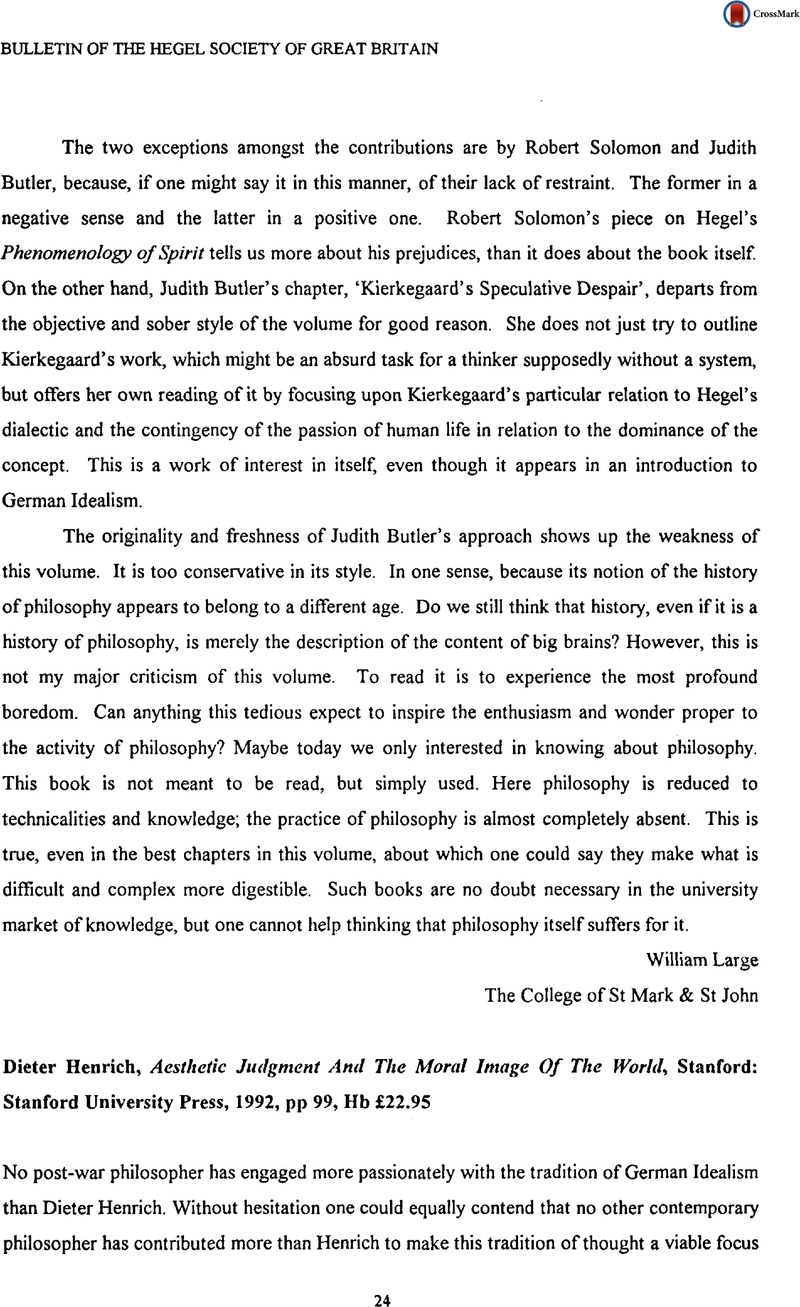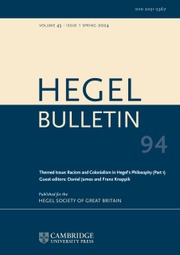No CrossRef data available.
Article contents
Dieter Henrich, Aesthetic Judgment And The Moral Image Of The World, Stanford: Stanford University Press, 1992, pp 99, Hb £22.95
Review products
Published online by Cambridge University Press: 23 June 2015
Abstract

- Type
- Reviews
- Information
- Bulletin of the Hegel Society of Great Britain , Volume 16 , Issue 2: number 32 , Autumn/Winter 1995 , pp. 24 - 33
- Copyright
- Copyright © The Hegel Society of Great Britain 1995
References
1 For the notion of philosophy as integration and critique, see Henrich, D, Flucht Linien, Suhrkamp: Frankfurt a m, 1982, pp 125–134 Google Scholar.
2 For a detailed account of the place of self-consciousness in Kant's critical philosophy, see Henrich, D, Identität und Objektivität, Carl Winter Verlag: Heidelberg, 1976 Google Scholar; “The Identity of the Subject in Kant's Transcendental Deduction”, in Shaper, /Vossenkuhl, eds: Reading Kant, Basil Blackwell: Oxford, 1989 Google Scholar.
3 Kant, , Critique of Judgment (1790)Google Scholar. Translated by W S Pluhar, Hackett Publishing Company: Indianapolis, 1987, p 15.
4 This was also certainly Kant's view. See Kant (1790), and in particular sections 9 and 38.
5 The systematic relation of early romaticism, and Hölderlin in particular, to Kant's third Critique is explored by Henrich, in his Der Grund im Bewusstsein, Klett-Cotta: Stuttgart, 1992 Google Scholar.
6 Henrich has argued this point more extensively, formulated as a critique of Habermas, Jürgen, in his Konzepte. Suhrkamp: Frankfurt a m, 1987, p 11 ffGoogle Scholar.




